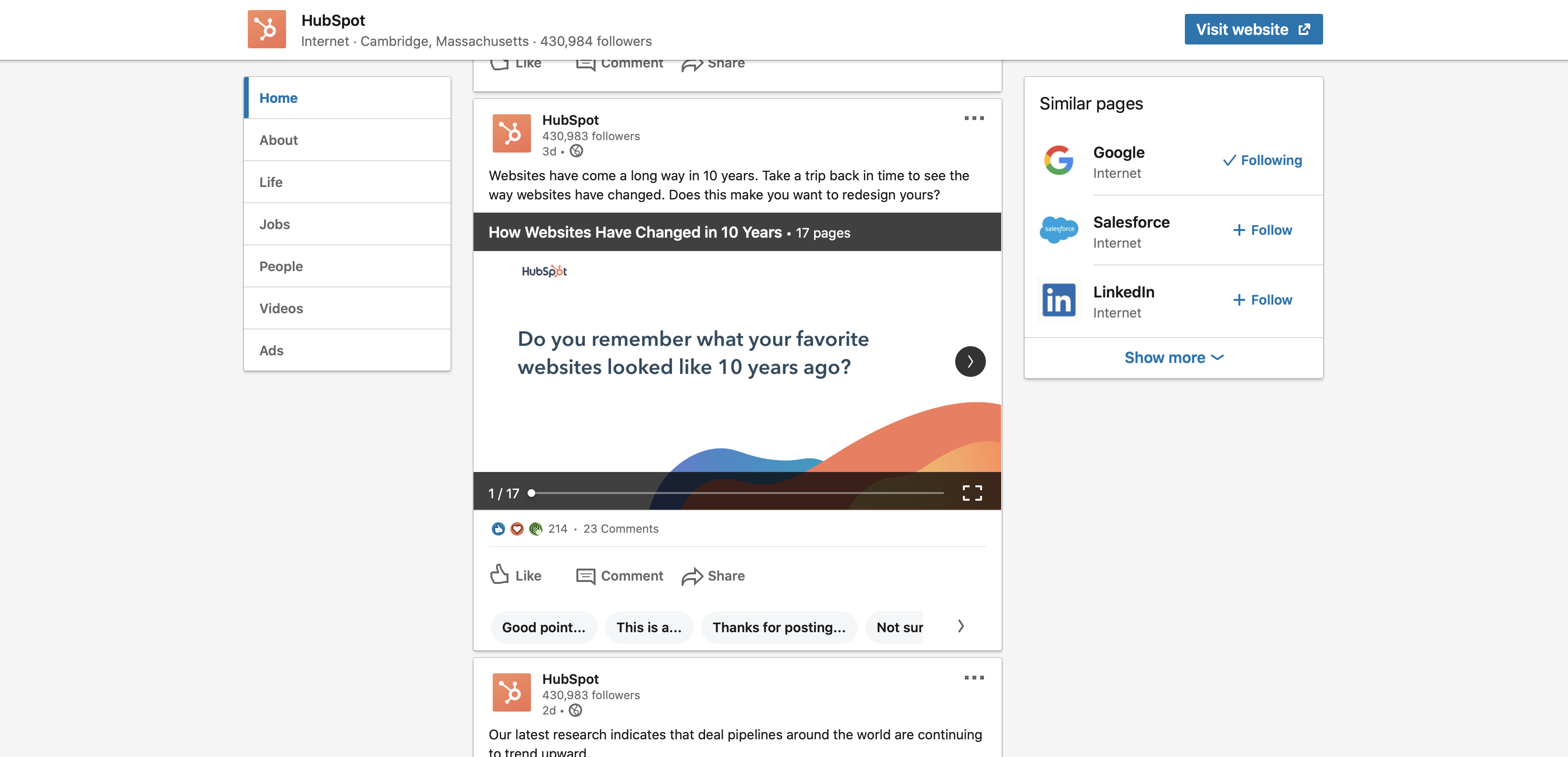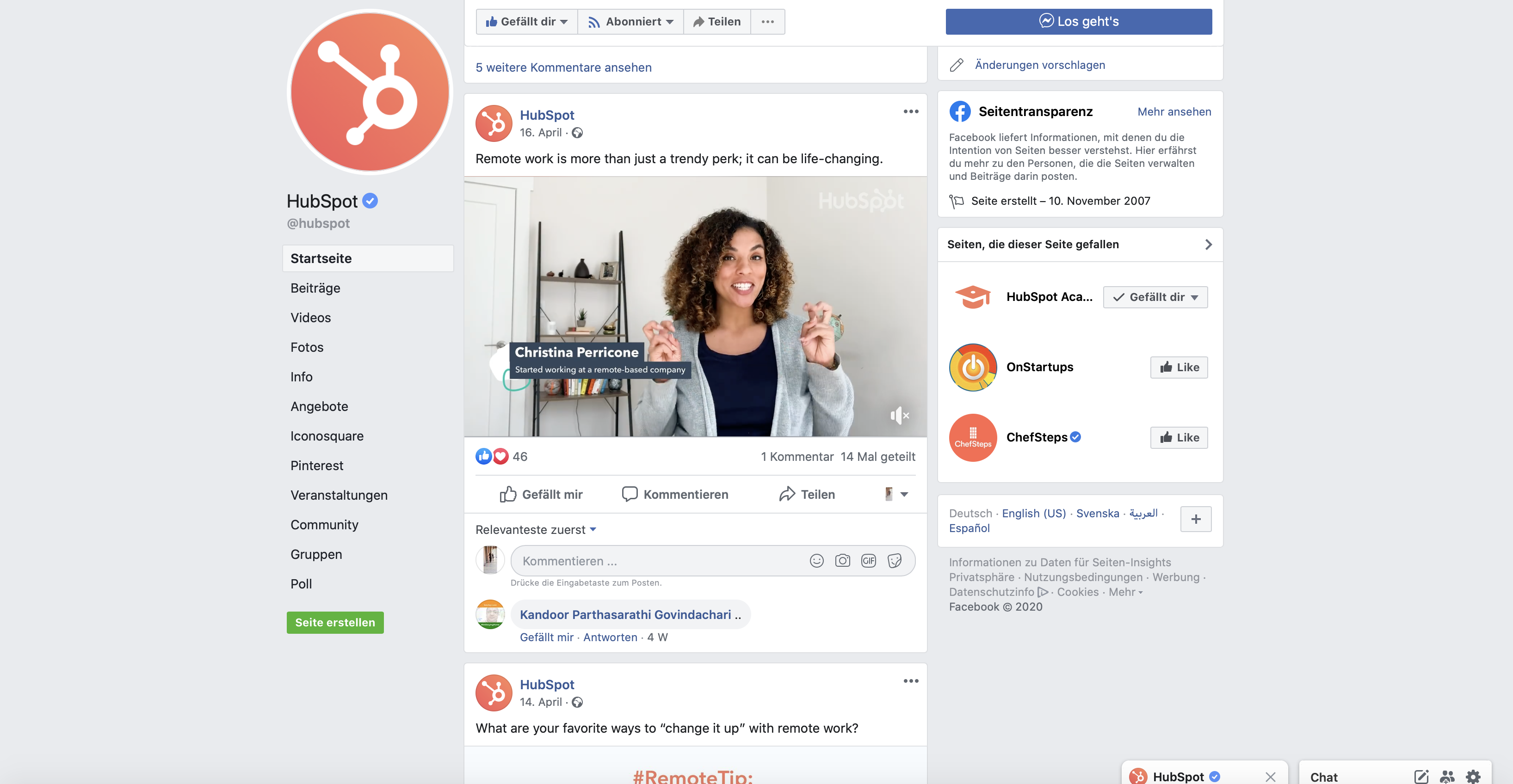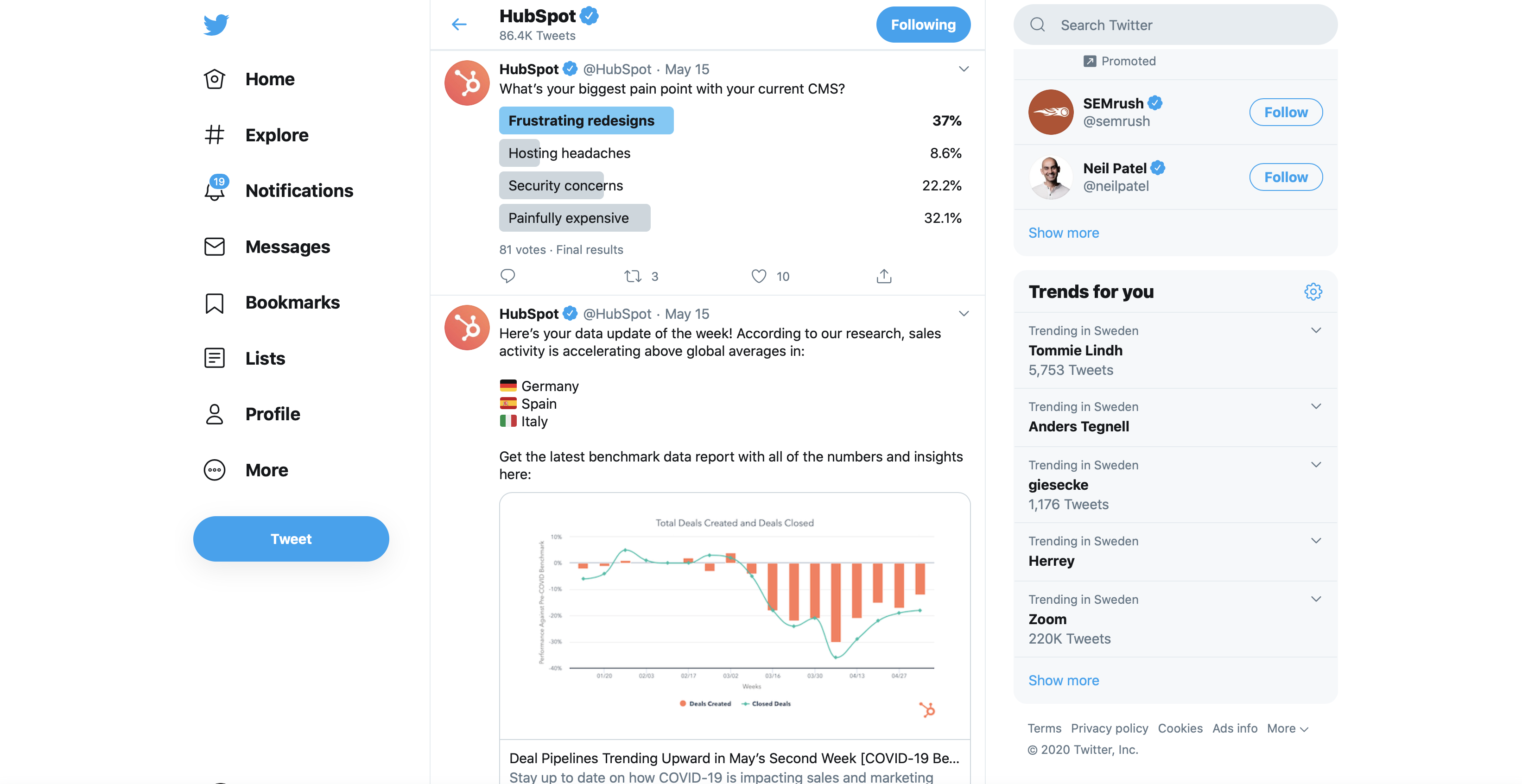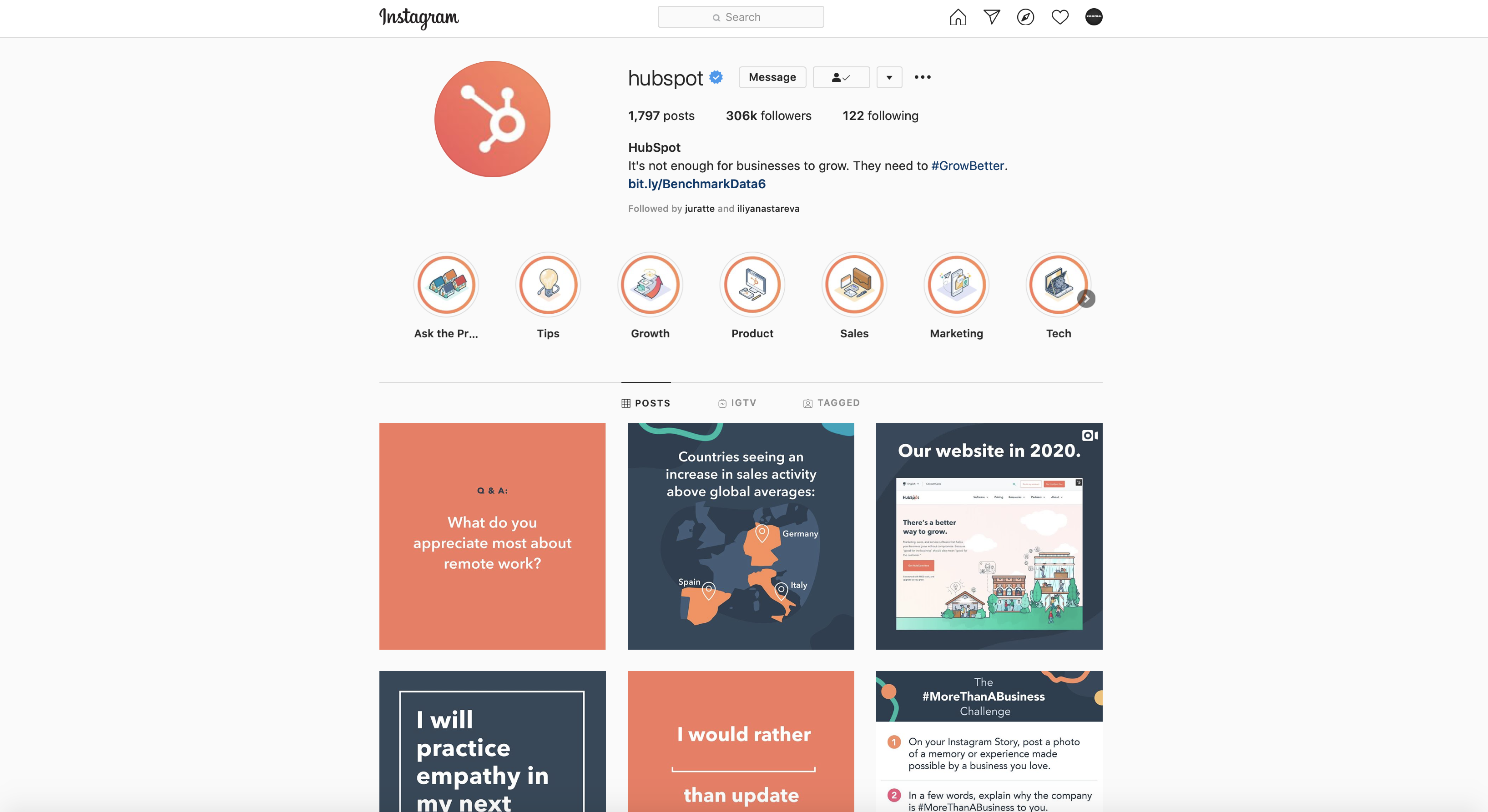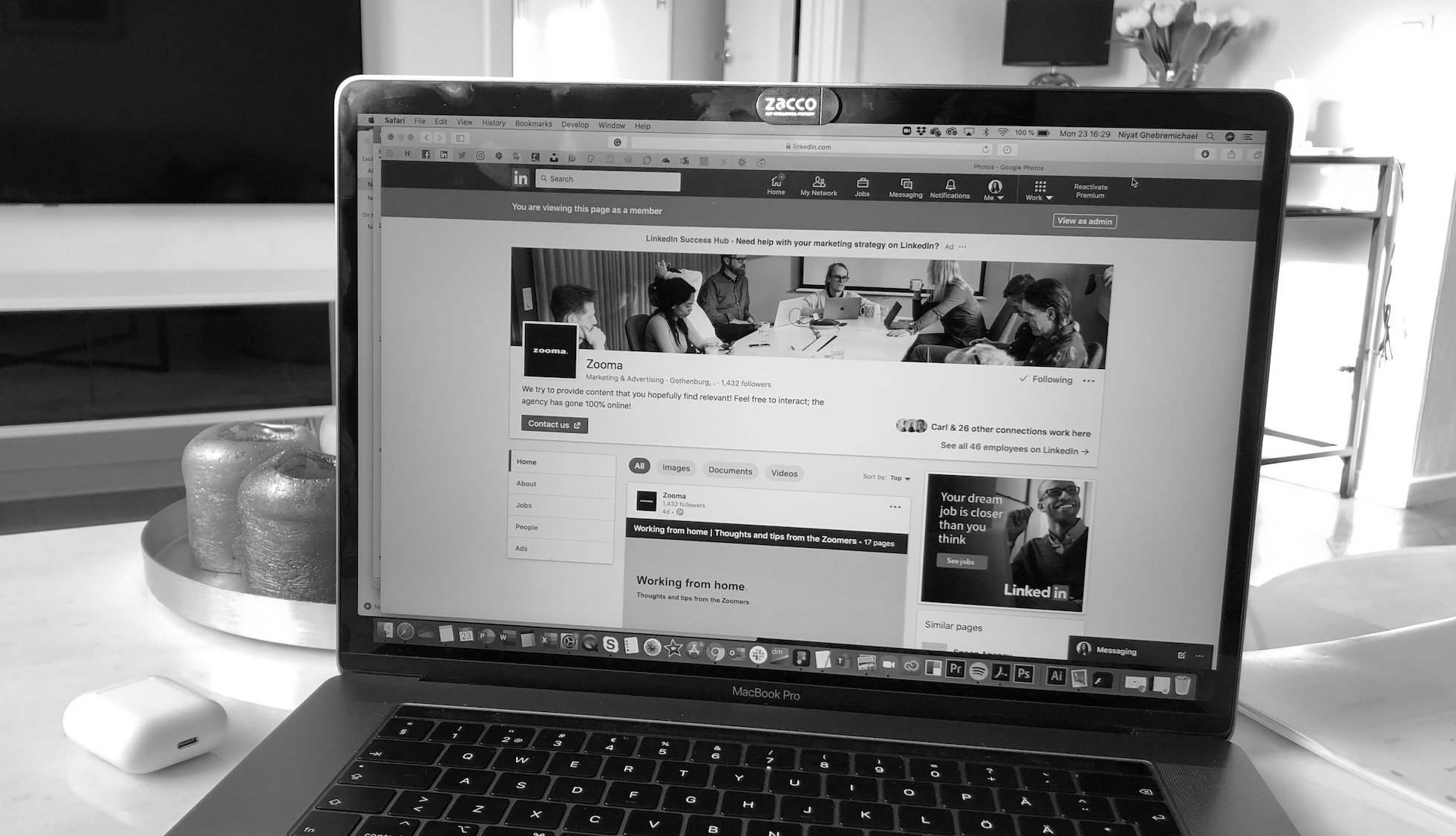Introduction
The purpose of this comprehensive guide is to give you an introduction to social media for business. By reading this guide, you'll learn the importance of using social media for your business and how to develop your own social media plan and calendar. Hopefully, you can get some inspiration by looking at the creative B2B social media examples presented below and also find the tools you need to succeed.
Chapters
Chapters
What is social media?
Social media are interactive computer-mediated technologies that enable users to connect, communicate, and share content quickly and in real time. Social media marketing is a powerful way for businesses of all sizes to connect with prospects and customers. Great social media marketing can bring success to your business, create dedicated brand advocates and even drive leads and sales. It involves posting and sharing content across platforms, engaging and interacting with users, and tracking and optimising social performance.
Why social media is important for business
There are many benefits for businesses to use social media; let's look at why social media is essential for your business.
Easily connect
The number of active users of social media has now passed 4.88 billion. Below is a summary of global social media users around the world in July 2023.
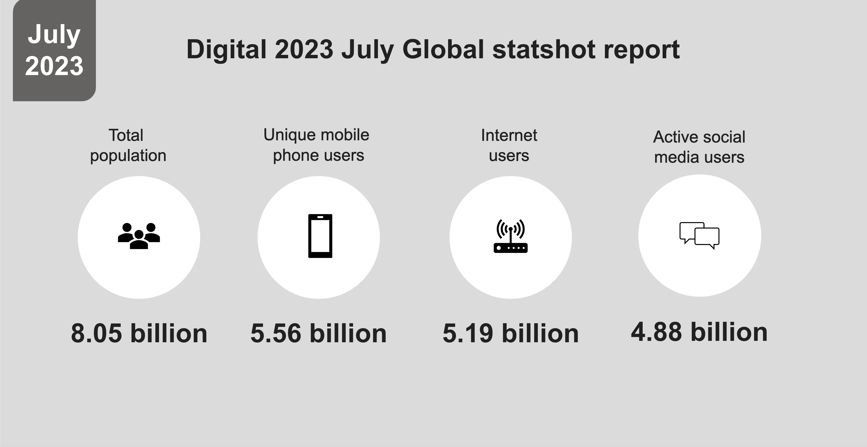
Source: We are social
Users surf on the go and use social media to communicate fast. The heavy use of social media in our everyday lives is a way of getting closer to existing and potential customers.
Build strong relationships
Social media is a neat tool for building a relationship with your target audience. By connecting and engaging with your existing customers and prospects, you'll be able to build lasting relationships between them and your business. Furthermore, being active on social media improves relationships with your target groups.
Increase brand awareness
Engagement on social media increases brand awareness. It includes comments, likes, messages and re-posts from your followers. So your content has a chance to be seen by a broad audience and attract more potential customers to your company. Content related to your products and details about your company on different platforms can help to increase brand awareness. In addition, include direct links on the different platforms to your .com/.xx to increase traffic.
Generate leads
Social media helps you attract buyers to your offering. Sharing your offering on social media is a simple way to increase an influx of leads and generate additional sales on existing customers because you're advertising to people who have opted to engage with you by following your account. Additionally, running social media advertising can boost leads and sales. By promoting your content on social media channels, you can present your well-researched content to new people, demonstrating your expertise and expanding your target audience.
Attract professionals
The shortage of skilled workers poses challenges for many companies. They have to assert themselves against competitors. A good image and presence on social media can help. Potential customers and new employees use social networks, so publishing job ads on the platforms is a good idea. With this modern form of personnel marketing, you can attract qualified professionals to your company.
How to develop a social media plan
First, define your social media goals
Before publishing content on social media, you should take a step back and look at the bigger picture. First, think about a comprehensive social media plan. Start by defining the purpose and goals of your social media marketing.
Think about the purpose of being active on social media. Why do you want to be active on social media? Do you want more traffic to your .com/.xx, or do you want to connect with your target audience? If you know why you want to be active in social media, you are ready to define the right goals. Make sure to align your social media goals with your overall business strategy.
Setting objectives makes measuring your social media return on investment (ROI) easier. You've likely heard of SMART Goals (Specific, Measurable, Attainable, Relevant, and Time-bound). Having SMART goals means that you can communicate tangible results to your organisation (or your manager).
You should track the correct metrics depending on the objects you have defined. Social media metrics show data related to the success of your content and its impact on your audience on social media platforms. These metrics can include data about your audience, posts, sharings and all other interactions on your social media platforms. Track all of your social media content across all platforms.
Evaluate and test different campaigns. In social media, things change fast. New platforms are emerging, while others are undergoing significant demographic changes. Continuous testing helps you understand what works and what doesn't so that you can refine your social media plan.
Learn about your audience
Learn everything about your audience - from what they want to know and what they are interested in. Creating buyer personas can help you get to know your audience better. Buyer personas are fictional, generalised representations of your ideal customers. They help you to understand your customers and prospects better.
Social media platforms
You must decide on which platforms you want to make your content available. Think about the needs of your target audience and where they spend their time. It is crucial to be where your potential customers are today and where they could be tomorrow. If you already use social media, conduct a social media audit. It will help you assess how well your current use of social media works for you.
Here is an overview of the leading platforms to help you decide which platform to use:
- More than 700 million professionals meet on LinkedIn. It's the most effective place for B2B marketers to connect with decision-makers, influencers, executives and users. These potential buyers of your products or services use LinkedIn for business purposes, connect professionally, and use and share their knowledge. This is a different intention and way of thinking than other social media platforms. And this emerging mindset has led to the explosion of content that is now exchanged weekly through the LinkedIn feed. We think LinkedIn is essential for B2B companies, so we've written a lot about it - like in these articles on how to make the most of your LinkedIn Page, outsmart the LinkedIn algorithm, and optimise your profile.
- With more than 2 billion monthly users, Facebook is still the most popular social platform. That means for your business: A large part of your target group is most likely active on Facebook daily. Facebook for business is and will remain a crucial discipline and should be an integral part of your social media plan. With Facebook, it's easy to turn your customers into a community by creating a Facebook page. Use Facebook to promote your content, and use paid advertising to convert it into leads.
- More than 1 billion Instagram accounts worldwide are active monthly - from users to influencers and companies. The platform can help companies increase brand awareness, reach the right audience and convert visual content into sales. From major brands to local, family-run businesses, companies worldwide achieve demonstrable results with Instagram. Learn more about how to drive traffic from Instagram to your .com/.xx
- Twitter is a powerful platform to increase the online reach of your business. 80% of all Twitter users have mentioned a brand in a Tweet. Twitter offers its users a constant stream of information and new content worldwide. It has more than 300 million users every month. Twitter is an excellent platform for increasing brand awareness through credible ambassador accounts.
- With 2 billion monthly users, Youtube is the second largest search engine after Google. Once you create a video, it appears in Google and YouTube search results. Marketing is moving towards video over static content, and YouTube is once again becoming a major player. You can create a YouTube channel for your business to upload videos for your subscribers to watch, comment on, and share. This channel is best suited for entertainment, brand awareness and supporting existing customers with educational and video help content. Get some tips for creating engaging video content online.
- Out of 300 million users, Snapchat's audience is primarily Generation Z. Snapchat is a story-sharing application. Stories allow users to post photos and video clips that disappear 24 hours after publishing. Snapchat may not be the best social media channel for every business, but if your business wants to connect with people under 35, Snapchat is the place to do it. 82% of all Snapchat users are 34 years old or younger. It is best suited for brand awareness and advertising.
- Pinterest is a place where visual content is exchanged. The 300 million monthly users visit Pinterest to discover new things and be inspired rather than engage with the brand, unlike most social media sites that focus on engagement. According to Pinterest, 55% of the pinners are explicitly looking for products. And 83% of weekly users have purchased based on the content they see from businesses on the channel.
- Clubhouse is an audio-based social media app. In so-called rooms, groups of people meet and can discuss specific topics. Here you can either actively participate or act as a quiet listener. The rooms can be open or closed, and there are rooms on several topics. Each user can either join public spaces or open their own space. A room can have multiple moderators and up to 5,000 audience members. Once you get the hang of which talks to join and in which rooms, it could be an exciting platform for marketers - from networking and professional development to hosting industry-specific talks.
Regardless of what platforms you use, the visual element is vital. Get it right with this guide to social media image sizes.
How to create a social media content calendar
Social media content
Your social media content should be relevant and created as part of your overall social media plan and following your goals. With the right messages, you can reach the right audience at the right time. Combine different types of content. You can have content that directly advertises your brand. However, not all content created should be sales-oriented. Try to produce relevant and engaging content that also informs, educates or entertains your audience.
Tip: Visual content is critical to your success in social media marketing. People process visual content much faster than text, making visual content much more popular than text information.
Social media content calendar
By planning and organising your content, you can ensure that all necessary work is done on time and that your posts can go online at the right time. Keep an overview of all topics, dates and channels with a calendar. This saves you time and nerves, and you never forget a business event or essential holiday. Start planning and scheduling your content in a calendar template or use a social media tool.
B2B social media example
HubSpot is a marketing, sales, and service software that helps your business grow. It is on many social media platforms and has thousands of followers. Here are examples of their social media marketing on LinkedIn, Facebook, Twitter and Instagram.
LinkedIn:
What they do right: Offer free documents for download to educate followers.
LinkedIn is a platform on which followers want to learn and connect. HubSpot offers a document-sharing feature for busy professionals, content in the form of PDF, PPT or DOC that could easily be reused.
Facebook:
What they do right: They use video to share experiences and encourage followers to interact. HubSpot focuses on a cause that resonates with its audience and shares relevant videos about their experiences. This is a great way to give your followers insight and encourage them to share their experiences.
Twitter:
What they do right: They use pools to understand their audience better.
Twitter polls let you know what your followers think, want, or are doing. People can provide an answer and see the results instantly with one click. In the example below, HubSpot asked about the most significant pain point with the current CMS to better understand its existing and potential customers.
Instagram:
What they do right: They use stories daily to get more visibility. Instagram stories are increasingly popular among companies. HubSpot regularly shares stories and will always appear at the app's top, and they will be in the constant field of vision of their audience. Read more about the benefits of using Instagram stories for your business.
Plenty of marketers and salespeople are used to using social media in their private B2C purchases. However, some decision-makers still have a certain degree of scepticism about whether social media is relevant for B2B. In our opinion, it is! The B2B world is more digitalized and onlinified than ever, and there's still a lot of change, so you need to be ready. In this article, you can find out some of the best reasons your B2B company should embrace social media.
Social media tools
There are currently many social networks and some new ones that show potential; it is almost impossible to manage all these networks manually. Fortunately, there are a variety of social media managing tools that can make your job and life more manageable.
However, you need to think carefully about how you invest in social media tools and how they fit into your overall infrastructure over time. So let's look at the five tools to help you pick what's best for your business.
- Buffer is more suitable for small to medium-sized companies and primarily aims at scheduling posts. The service supports Facebook, Instagram, LinkedIn, Twitter, and Pinterest. Free users can link up to three social accounts. Buffer has a range of publishing, engagement, analysis and team collaboration products.
- Hootsuite, the most widely used social media management tool, is compatible with over 35 social networks, including Facebook, Instagram, Twitter, YouTube, and Pinterest. It's an all-in-one platform that allows you to curate and plan content, measure your social ROI, run social media ads and more. The free plan includes managing three profiles, fundamental tracking analysis, various growth and content statistics, and two RSS feed integrations.
- HubSpot allows you to connect your social accounts – Facebook, Instagram, LinkedIn, Twitter and YouTube – to your hub or blog and automatically share new content as it is published. Also, it lets you schedule content for later and gets suggestions for the best time to post. Social reports enable you to compare the performance of different platforms and publishing times. In addition, you can report on the success of your social plan across all platforms from a central location. This tool is ideal for larger enterprise teams.
- Sendible allows you to connect to social networks like Facebook, Instagram, LinkedIn, Twitter, Pinterest, YouTube and others. With Sendible, you can plan your content either individually or in bulk. Everything is stored in the interactive calendar, so you can drag and drop the content if something needs to be customised. The Priority Inbox brings all your social messages from different networks and profiles into a single stream. In addition, Sendible comes with a set of pre-designed templates that you can use to create detailed social media reports.
- Sprout Social supported networks are Facebook, Instagram, LinkedIn, Twitter, and Pinterest. It includes scheduling tools, including the ability to post to multiple networks simultaneously. It also has social monitoring and keyword searching features that help you monitor your brand on social media.
Compare more social media management tools that users have rated.




